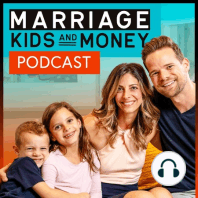27 min listen

How We Paid off $50,000 of Debt in 1 Year
How We Paid off $50,000 of Debt in 1 Year
ratings:
Length:
51 minutes
Released:
Feb 12, 2020
Format:
Podcast episode
Description
In May 2010, I married my dream girl. She was funny, beautiful and chock-full of 90's TV trivia. Our first couple of dates consisted of a lot of Saved by the Bell and Seinfeld jokes. Outside of knowing the Soup Nazi episode verbatim, Nicole and I both came into the marriage knowing the general basics of personal finance. You know, advice like: "Don't carry a credit card balance" "Always have some savings for a rainy day" "Good debt is okay to have" In the years before our marriage, we did rack up a hefty amount of "good" debt. Car payments and student loans were a few of the good debt offenders we carried into our marriage. Hey, you NEED a car to get around, right?! And how else are you going to pay for college?! After some research and personal soul-searching, there really was no good debt or bad debt in our eyes. It was just debt to us. This was all just money we owed someone. It wouldn’t go away until we decided to clean it up. We decided that being in debt was not something we wanted for our new family. We vowed to become debt-free (outside of our mortgage) before our first child was born. In September of 2010, we owed $20,908 on my wife’s car and $27,124 on my student loans for a grand total of $48,032 of good/bad/indifferent debt. During the next 12 months, we took that $48,032 of debt and clobbered it! By September 2011, we owed $0. Zilch. Nada. Bye-bye debt. Here are the 5 steps we took to rid debt from our family forever: 1. Develop a Monthly Budget We developed a monthly written budget that defined our way forward. We knew we had to reduce our expenses and increase our debt payments. The written budget guided us to ensure we would stay the course. For budgeting, we used a simple spreadsheet. It wasn't too fancy. We just listed out our income and our expenses and made sure we allocated each of our dollars to an assignment. As the years past, we decided to upgrade to Mint. This online budgeting tool gave us more flexibility and made the monthly budgeting process a lot quicker through its ability to link up to your bank and credit card accounts. I developed a simple 10-step guide to get started on Mint. (For couples, consider checking out Zeta. This is another free budgeting option that will help you win together.) Good old fashioned pencil and paper will even do! Make sure you have a budget and stick to it. 2. Choose Your Debt Elimination Strategy There are multiple debt elimination strategies to consider. Choose the one that works best for you and your situation. Debt Snowball How it works: Take your debts and line them up from smallest amount owed to the largest amount owed Pay the smallest off first by making extra payments each month Given that you’ll now have less interest to pay with one of your eliminated debts, take that extra amount of money and start paying down the principal on the next debt The process continues with your payments growing larger like a snowball down a hill Debt Snowball Example: You have $2,000 in credit card debt, $500 in medical debt, $25,000 in a HELOC Pay off the medical debt first, then the credit card, then the HELOC Why the Debt Snowball works: By getting some quick wins in paying off your smallest debt first, you’ll feel motivated to keep going! If you started with the $25,000 HELOC, you could be at it for a quite a while and become uninspired to continue paying off your debt Debt Avalanche How it works? Take your debts and line them up from largest interest rate to smallest interest rate Pay off the debt with the largest interest rate first by making extra payments each month The process continues similar to the debt snowball Debt Avalanche Example: Credit card debt (20% interest), medical debt (4% interest), HELOC (6%) Pay off credit card debt first, then HELOC, then medical debt Why the Debt Avalanche works: Mathematically, this helps you pay off the most financially draining debts that you hav
Released:
Feb 12, 2020
Format:
Podcast episode
Titles in the series (100)
1 | Investing Made Simple with Scott Alan Turner: Investing for retirement … We all know how important it is. But where do we start?! How much money do we need? Do we work with a broker? How do we make sure we’re investing correctly? Retire Rich Scott Alan Turner, by Marriage Kids and Money